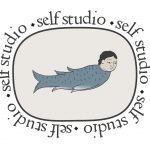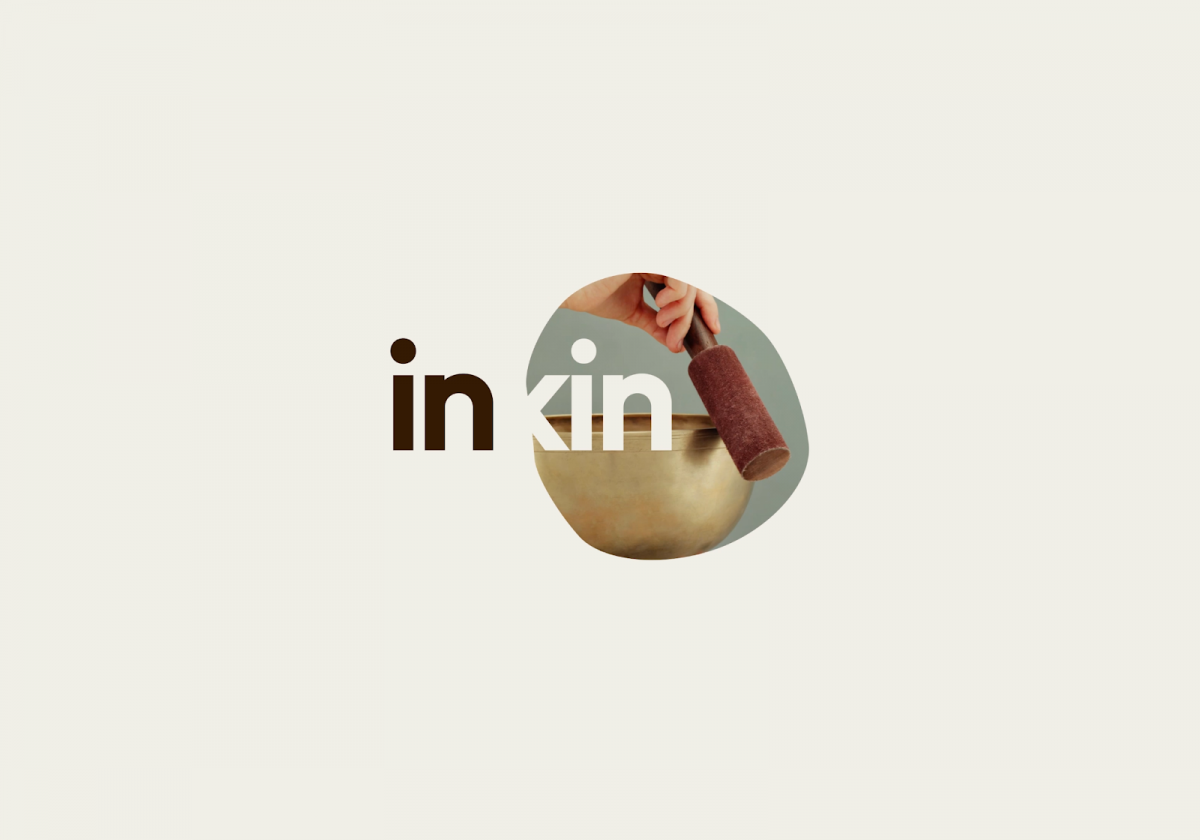There are many reasons you might want to rebrand your business. Some are positive (a change in your company mission, targeting an untapped demographic, showcasing a new range of products) to the more remedial (helping confused employees with a company mission, or rebuilding trust after a PR issue).
Rebranding involves more than mere change of company name or logo. It’s a subtle process that goes to the very essence of your business; a wider chance to strategically play with a variety of elements. And so it pays to have experts who understand all these elements, leading you through the process, and leave you and your team with assets and a roadmap to build on. While this can be done in-house, the expertise to do it for most companies does not exist; modern marketers are specialised in many areas, (increasingly technical and CRM based), but generally they are not trained in branding. This is why some people come to re-branding agencies like Self Studio.
A quick word about brand and identity and then we’ll move onto re-branding. Let’s look at the example below of a travelling salesman.
This is a travelling salesman. It doesn’t matter what he’s selling exactly here. In the past, salesmen like these would go door-to-door, showcasing the latest product for whomever (in this case housewives) across the States. The product would have many features, some of which were undoubtedly impressive – and perhaps some that would actually add some utility to the persons’ life! – but in a way this does not matter so much. Underneath this is something more subtle. It is the brand of the person doing the selling that is closing the sale.
The man is attractive, dons a nice suit, looks confident and approachable, well put together. Charming even. The salesman here is representing the brand. None of this is stated anywhere. The two would no doubt have a perfectly pleasant interaction. But the aim for the company here is undoubtedly to get the prospect to associate the product with the man, who has all these desirable attributes.
Looking for help with a rebrand?
Talk to us about a re-brand
We've rebranded websites, apps, retail businesses and physical packaging all across the world.
Schedule A Free Brand AuditYou can see the brand is not the product. The product is a piece of metal which does some things. But it suddenly gets all the associations of everything else that is not the product. Subtle. But the difference between trust and non-trust can be the difference between a healthy, sustaining business and one that never takes off; all down to subconscious cues. And the same goes for your business’ brand.
In this guide we walk you through what to expect from a rebranding process. A good rebranding agency will understand the importance of all of these steps and work through them with you in detail.
What A Rebranding Agency Does
- Understands the client brief by asking the right questions
A rebranding agency needs to know: why are you looking for rebranding? Generally we begin with goals. What you want or expect from your rebranding agency depends on these goals. Have your company values evolved over time, meaning that you’re looking to instil these in your customer base or employees?
Or are you paving the way for a new product, a departure from your previous offerings, and need to re-educate the market?
Or are you looking to rebuild trust in your consumers after some negative media exposure?
Or do people not ‘trust’ or ‘get’ what you do?
and so on…
- Conducts market research to glean insights
A key part of any rebrand involves exploring the market, understanding trends and patterns of whoever your customers are. You will want to explore in detail what your competitors are doing and what opportunities exist in communicating with your customer base. Why do rebranding agencies do it? It helps you make decisions during the rebranding process.
Generally, as part of our research process during a rebranding project, we position a client’s brand along a graph or matrix to understand where your competitors sit and where you want to sit. Take a look at the graph below for an example:
3. Defines specific brand objectives:
We’ve already touched on the broader goal above; based on the results of your research, your rebrand agency should then work with you to understand exactly what you’re looking to achieve. The more detailed they go into this question, the more detail you can expect from them in delivering the specific elements of the rebrand (covered below).
4. Understands the audience:
A deeper dive into your audience - whether your customers, suppliers or the general public - involves direct research, qualitative data and statements of intent. This research will help you frame a broader strategy. This is especially important if, say, your wider goal involves reeducating customers; what misconceptions do they have at the moment?
Looking for help with a rebrand?
Talk to us about a re-brand
We've rebranded websites, apps, retail businesses and physical packaging all across the world.
Schedule A Free Brand Audit5. Creates a strategic plan:
With the information and goals defined above, you will now devise a step-by-step plan for creating the materials needed for the rebrand and implementing or rolling them out. We’ll explore each of these steps in turn.
Create The Specific Branding Elements
1. Logo and Visual Elements:
One of the key assets of a good rebranding agency is their access to highly skilled visual designers. Whether it’s a strong logo that gives the perfect first impression of your business, or the colour palette that captures the emotional response you want from customers, or your typography or imaging, your visuals are a crucial step in building identity. Here are examples of visual elements we’ve delivered for some clients in the past years…
Above is the brand identity for a recent client, Bani-Gani, a Georgian restaurant chain based in London.
There are plenty of restaurants out there with spicy sounding Georgian names. As well as Anglicised versions thereof. We wanted to be different. Something to stand out from both the traditional restaurant and the street food stand. Something accessible to everyone. And something that reflects the soul of the fast food idea. Then we examined the Georgian alphabet, Mkhedruli, and the names of the first three letters jumped out from the page — it all added up, Ani, Bani, Gani — the ABCs of Georgian cuisine. Then we got rid of the A to make it shorter, more visually memorable.
Teleporting is an adventure app. The first of its kind. It’s a travel service for thrill seekers who are searching for something different. Something to take them out of their comfort zone. And for those who organise and champion such experiences. Self were tasked with creating a brand identity and designing the UX for this ambitious offering. With the myth of teleportation at the heart of the brand, we took on the challenge of designing the first ever teleportation app, not just a booking platform.
2. Messaging and Communication:
Strong messaging goes beyond your brand name and slogan. A good brand story that describes not only how but also why your business came to existence in the first place is invaluable. So too is your mission statement, drawing your customers and suppliers along with you on the journey. Many potential customers will interact with you for the very first time via your landing page text or an article on your website. A good rebranding strategy will include all of these elements by understanding how they fit together; the bigger picture.
Although an established corporate wellness provider with Uber, PayPal and Google under their belt, inKin struggled with building brand loyalty and securing new customers. Our brief was to create an authentic brand with a new positioning and vision, mission and values, visual and verbal identities, that would empower inKin to find their distinct place on the booming market of corporate wellness.
Looking for help with a rebrand?
Talk to us about a re-brand
We've rebranded websites, apps, retail businesses and physical packaging all across the world.
Schedule A Free Brand AuditUsing our research findings, we decided to embrace a bold new brand mission: to transform corporate wellness from metrics-centred to human-centred; and arrived at a new positioning and vision for the product, centred around belonging, community and a holistic approach to wellness. “Think of inKin as an open space filled with a variety of tools and activities across different aspects of wellbeing, where anyone can create a shared experience allowing members to feel more connected to each other and their community, online and in person.”
Reimagining inKin as a playground, we turned to urban design & architecture for visual inspiration. Behind the logo is the idea of an open space that changes and adapts to the activities and groups within it - as any functional public space should. Our aim was to establish a sense of openness to change, a free environment where every team member can be themselves - which is what inKin is all about: flexibility, curiosity, personality. Seeing typography as a wayfinding mechanism within the playground we chose Sul Sans, a geometrically constructed font used on signs and buildings in Portugal.
Implementation and Rollout
1. Internal Alignment:
You might believe in the reasons and the details of your new rebrand. But a true rebrand comes from within. This means getting your team invested in the process and bringing them on the journey with you. And not just those working within the company; your supplies too. Many businesses make the mistake of equating a rebrand with a simple change of aesthetics. But a real rebrand involves a cultural shift and a good agency will understand and enable this.
2. Consistency Across Platforms:
You’re not only paying for an agency’s vision and imagination and research; you’re also paying for good organisation. A thorough and well executed rebrand involves ensuring that your new identity is changed across all platforms; all parts of your website, your various social channels, any physical advertising and anywhere externally your partners talk about you.
3. The Timing Of The Rollout:
The importance of timing cannot be understated either. This can be for broader reasons - the rebrand involves alignment with a particular market trend or a change in regulation - or for more specific reasons. For example, if you’re a food brand with products already on the shelves in thousands of shops, your change in packaging to show your new branding might need to align with the running down of old packaging.
And a plan that includes clear timings ensures that, as outlined in our previous steps, no stages are missed in the implementation.
4. Monitoring And Adapting To Results:
As with any good business partner, a rebranding agency continues to work after the launch. They’ll not only walk you through a successful rebranding but also works with you to analyse its effects and make any adjustments. For example, based on how your customers talk about your new brand you might want to edit elements of your story and website content or update your social media strategy to incorporate how they’re interacting with you.
The Ever-Evolving Nature of Branding
The rebranding process can seem overwhelming and rich with detail, but a focused and dedicated rebranding agency goes a long way in making it less daunting. The most crucial element is to find a partner who is totally committed to the aims of your rebrand, skilled in creating the verbal and visual elements of it and diligent in their attention to detail in implementing it.
Combine those elements and you’ll be set for success. Good luck!
Looking for help with a rebrand?
Talk to us about a re-brand
We've rebranded websites, apps, retail businesses and physical packaging all across the world.
Schedule A Free Brand Audit

